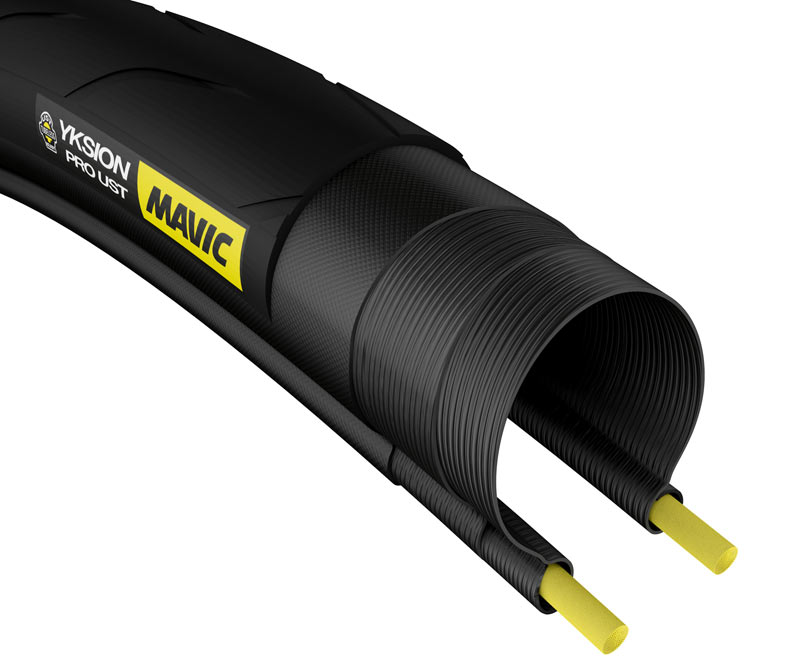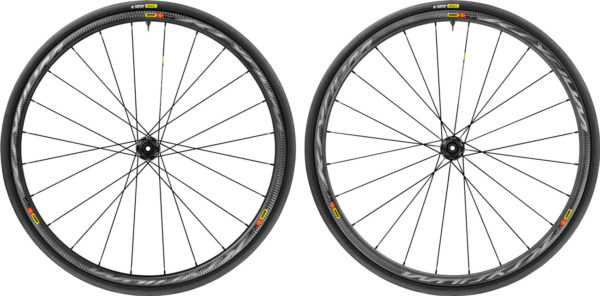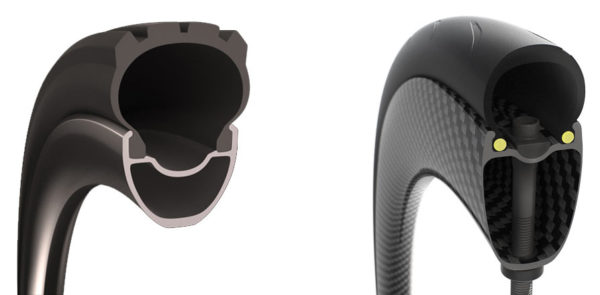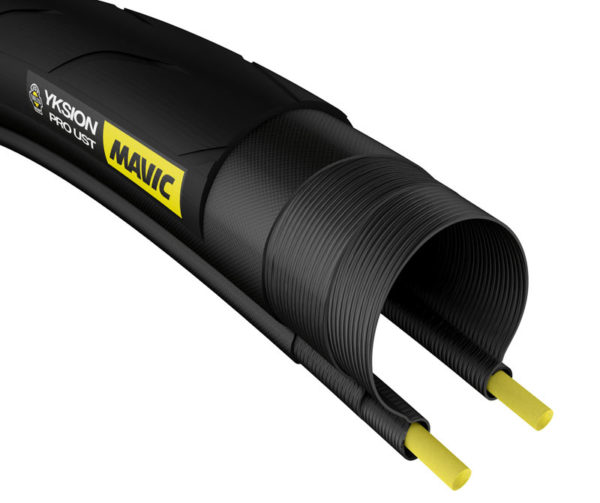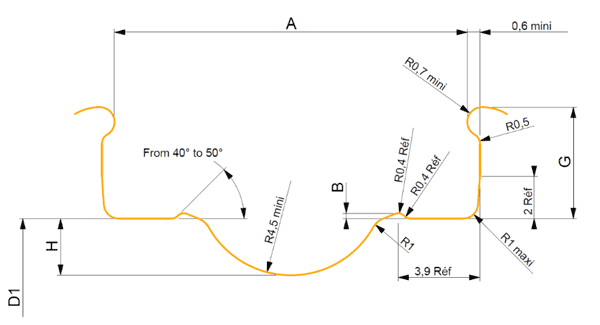When mountain bikes first moved to tubeless, the primary standard was UST. It promised a standardized rim and tire interface, and tires that would essentially lock into place and hold air without sealant. While it worked, many brands ended up using a non-standard “tubeless ready” design that was far lighter, but required sealant and had wide variations between rim profiles, tire beads and abilities to hold air on its own. And that wild west is what’s largely prevented road tubeless from taking off. We covered this saga in two parts here and here.
Now, however, Mavic is standardizing things and doing it big, bringing virtually all of their road wheel and tire systems into the UST fold. The new standard promises easy installation and inflation, better performance, and run flat safety…
UST works by creating a defined bead hook shape and size, then matching the tire’s bead shape to it. This lets the tire bead pop into the bead socket and stay there, even with extremely low or no air pressure. So, where some tubeless setups risk losing the tire if you have a sudden blowout, UST shouldn’t pose the same safety risk. With the tire stuck on the rim, even when flat, you retain more control to safely pull over and fix it.
Other benefits of the system include lower rolling resistance and better grip. The reduced rolling resistance comes by eliminating friction between tire and tube. In Mavic’s tests, they reported a 15% reduction at the same tire pressure. Even when reducing tire pressure by 15psi, it still showed a 5% improvement in rolling resistance while also making the ride more comfortable without worrying about pinch flats.
This system also saves weight. Despite the UST tire weighing about 45g more than the non-UST version, their UST wheel/tire system with sealant comes in 40g lighter than a comparable tire with tube. And with their FORE drilled rims, which don’t break the surface of the rim bed to insert the spoke nipples, you won’t even need rim tape.
Mavic’s new Yksion Pro UST tires use a Kevlar bead, are more pliable than carbon beads, making them easier to install and remove. They also get a new rubber compound called 11Storm that, they say, is a good blend of grip and lower rolling resistance. They’ll be available in 25mm and 28mm widths.
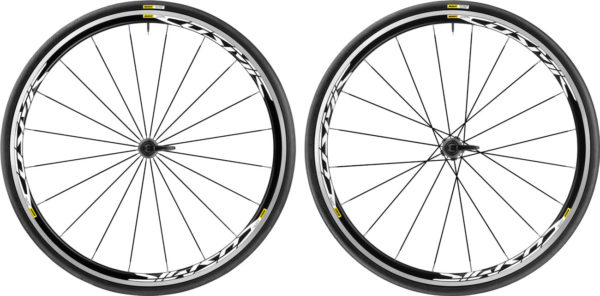
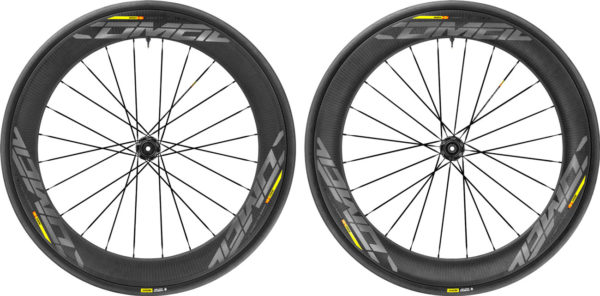
US pricing and availability for all of the new UST road wheel and tire systems is:
- Comete Pro Carbon SL Disc–$1899, 1755 grams (available Q3)
- Comete Pro Carbon SL–$1799, 1635 grams (available Q3)
- Cosmic Pro Carbon SL Disc–$1899, 1570 grams (available Q3)
- Cosmic Pro Carbon SL–$1799, 1450 grams (available Q3)
- Cosmic Elite Disc–$499, 1770 grams (July availability)
- Cosmic Elite–$449, 1850 grams (July availability)
- Ksyrium Pro Carbon SL Disc– $1899, 1510 grams (available Q3, shown at top of post)
- Ksyrium Pro Carbon SL– $1799, 1390 grams (available Q3)
- Ksyrium Pro Disc–$1099, 1620 grams (July availability)
- Ksyrium Pro–$999, 1420 grams (July availability)
- Ksyrium Elite Disc–$799, 1690 grams (July availability)
- Ksyrium Elite–$699, 1520 grams (July availability)
- Allroad Pro Disc–$1099, 1660 grams (available Q3)
- Allroad Elite Disc–$799, 1720 grams (available Q3)
- Allroad Elite RB (rim brake)–$799, 1600 grams (available Q3)
- Open Pro Disc–$99, 420 grams (available Q3)
- Open Pro–$99, 420 grams (available Q3)
- Yksion Pro UST (tire)–$69, 260 grams
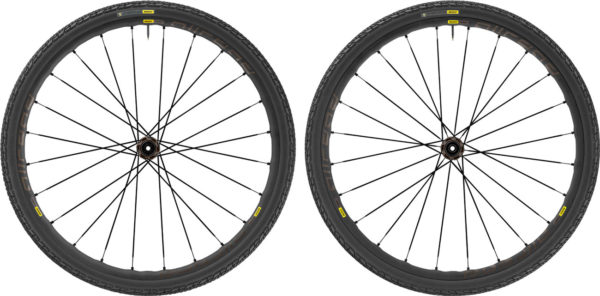
Technically, the system doesn’t require sealant to hold air, but Mavic recommends adding about 30g of sealant per tire as a defense against punctures. They say the new Road Tubeless UST standards are being approved by ISO and ETRTO, which define the rim contour designs and diameters. By using an ETRTO standard for defining UST for road, they’re opening the door for others to follow suit and create an ecosystem of compatible wheels and tires. And their tires are made for them by Hutchinson, so perhaps we’ll see UST tires from them soon, too. Mavic helped create the UST MTB standard in 1999 along with Hutchinson and Michelin, and for a time those companies and Shimano were working to create a road UST standard before abandoning the process in 2005. Fast forward and new manufacturing processes and a growing interest in road tubeless and the standard is now set.
